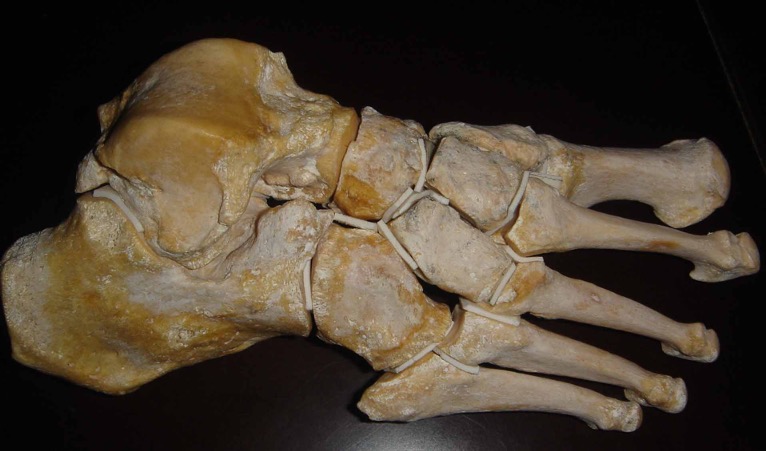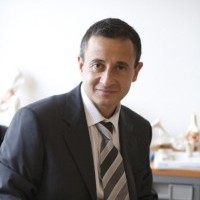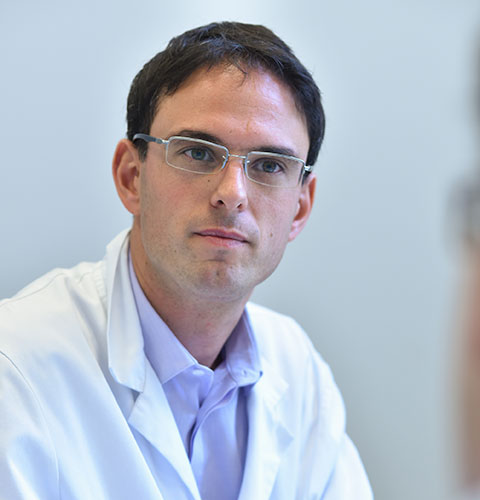Before surgery for hallux valgus
By whom shall I be operated for the hallux valgus? The person the most able to judge the surgical results is your referring physician who can regularly see his patients operated of a hallux valgus coming back, and has a precise idea on the surgeon. Furthermore, many patients come by “word of mouth” adviced by a satisfied friend.
How much will it cost ? When concerning French patients, this surgery is supported by Social Security and private supplementary insurance. Foreign patient are most often fully covered by their private health insurance. In any case, the financial question has to be clearly addressed before the intervention with a quote and after with an invoice.
Do I have to see an anesthesiologist? The consultation is mandatory even for an outpatient surgery and even if a local anaesthesia is planned. This consultation has to take place at least 2 days before surgery and usually in the month before. The more often an exclusively sensitive local anesthesia of the foot is performed. However it may be a general, epidural, or popliteal (behind the knee), depending on the patient’s case and will.
What shall I bring for the intervention? Except toiletries and administrative paper, X-rays and all imaging results are mandatory for guide surgery procedures.
Hospitalization
How long will last the hospitalization ? Depending on the surgical procedure, the habits of the surgeon, and the patient’s social context, hospitalization will last from a few hours up to 2 or 3 days. In most cases surgery is outpatient.
When will I be able to walk ? Usually same day from surgery and for 2 to 3 days, walking is possible at home on the large dressing made in the operating room. This is useful to gain confidence and allow weight-bearing on the operated area. After the first dressing changed at home, full weight-bearing is allowed with the medical shoe. It is essential in all cases to properly raise the limb to fight edema when not standing.
The operation
How long does it take ? Generally, depending on the expected difficulty, a surgery for hallux valgus lasts between 15 and 25 minutes, sometimes more.
Can we operate both feet at the same time ? Technically, is it possible, but not recommended. The recuperation will be even more laborious, since the patient cannot be helped by a valid limb.
Which technique is going to be used ? This question has to be answered in the preoperative consultation. Precisions are given about surgical technique, classical or mini invasive, or even combined, the use or not of metallic implants, and the location and size of scars.
Will I be operated by the surgeon I saw in consultation? Yes, it is an unwavering principle.
Will I hear the noises of the surgeon’s tools as with the dentist? Even under pure local anesthesia, it is possible to administer medication to relax and lower the level of consciousness.
Will I see my surgeon in the operating room? Yes, he will come to greet you and verify ultimately the side to be operated.
Just after surgey
Am I going to suffer? Local anesthesia protects for several hours, a time taken to start the treatment by oral painkillers as soon as possible. These painkillers are a combinaison of various families of drugs to pass the postoperative course. Under these conditions it can truly be said that the appalling pains reported by our grandmothers have disappeared.
When will I have my first bandage? Some surgeons make it 48 hours after, some prefer to leave it a few days, some others make it later, particularly for the mini invasive surgery, to then place a silicone wedge between the toes to maintain temporarily the good position, the time to consolidate the bone.Usually, you have to call a nurse who will do it three days after surgery. You will be able at this time to wear the medical shoe.
Afterwards, the bandages are madedressing is changed three3 times per week during 15 days. You must protect the wound from the water by enclosing the leg in a plastic bag in the showerYou may not wet it, enfermant the foot in a plastic bag under the shower.
The first dressing is done at home, 3 days after surgery. Weight-bearing, authorized from the start is then done with the medical footwear. The dressings thereafter are done at a rate of 3 per week for 15 days. It must not be wet, enclosing the foot in a plastic bag in the shower.
Will I have anticoagulant injections? This point is not commonly established. Many surgeons prefer to prescribe it for 10 to 15 days to minimise the risk of vein thrombosis.
When will I be able to walk?
Refer to “Hospitalisation”
The postoperative period
Do my suture threads have to be removed? The threads are absorbable or non absorbable, according to the surgeon’s choice. In this last case, they are removed around the 15th postoperative day.
When will I see my surgeon again? Usually the first consultation is the 21st postoperative day.
What is the first postoperative consultation for? The surgeon will control the scar, verify the X-rays you will have done the same day or the day before, prescribe physiotherapy to mobilise the toes, massage the scars to soften them, fight against swelling, and help you to recover a normal walking pattern. Normally, the postoperative medical shoe is abandoned in favor of usual soft sole shoes, which will help to move toes.
Do we always have to elevate the limb? The fight against swelling has to be permanent, prolonged until it disappears and can take up to several months. It is advised to place wedges under the bed’s feet instead of putting pillows under the mattress, and to put your foot on a stool when you sit.
How long do I have to stop working? Of course, it depends on the nature of the work, but also transportation: for example, it is not recommended to trample when you stand up at work, or to commute half an hour twice a day during 21 to 45 days depending on the case. It has to be evaluated pre-operatively to avoid bad surprises.
When can I drive a car? 30 days seams reasonable but sneakers may help to drive earlier. However, long car rides are not recommended as it’s preferable not to keep you feet downwards for a long time to avoid swelling.
Do I have to stop smoking ? It is highly recommended to stop smoking before and after surgery at least during the cutaneous healing. Indeed, the inhalation of nicotine composing a cigarette contracts blood vessels that bring the cicatrisation elements, and thus delays it. In the same state of mind, if any doubt, your surgeon will ask you to get a Doppler screening of you lower limb to identify a venous or arterial issue. Icing the wound lowers pain but acts the same way as nicotine. Therefore it is strongly recommended not to ice your foot after surgery.
The consultation of the 45th postoperative day
Is swelling normal that this time? Yes, it is perfectly normal. The above described rules are still applied, but less rigidly. It will be the last symptom to disappear, after several months according to the patient’s quality of lower limbs veins.
Which shoes to use? Wearing normal shoes is possible at this stage. Sometimes a higher foot size is necessary until the 3th month. Pointed tip shoes will not be possible for every women, but in any case not before the 3rd month.
When will I be able to practise sports again ? Swimming or indoor gymnastics and biking can be resumed around the 30th day, other sports allowed around the 2nd to 3rd month.
Is it necessary to make insoles ? They are not systematic but can be useful because the ground pressure may be modified by the surgey. Besides, in case of a valgus flat foot, the heel is shifted outwards and the body weight inwards on the first ray and the big toe. To avoid recurrence, it is mandatory to wear soles manufactured by a podiatrist. The delay to respect after the surgery is at least 3 months.
In the long term
Can a recurrence occur? Recurrences are still possible, particularly for women operated when they were young. Their life expectancy is longer and new deformations may appear. However, since corrections of the deformity are performed in the bones, forefoot’s architecture is modified and recurrences are less numerous and less severe. If a global analysis wasn’t realized from the beginning, consequences can occur not only on the big toe but also on the others : forefoot plantar pain, claw toes… An articular stiffness can also appear at the big toe’s base.


